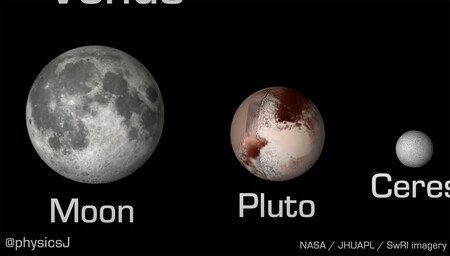How big is he really? Solar system? The question can have an aseptic and technical answer, measured in mathematical or physical concepts. The reality is that getting used to the idea of such huge dimensions is very complicated, so we need more imaginative and creative tools, more assimilable by our imagination. It’s what you try (and get) this video produced by James O’Donoghueformer NASA worker and current JAXA employee.
Works like this help us to have a better idea of what our solar system is like, given that its sizes are hardly conceivable. The planets can reach diameters of tens of thousands of kilometers (Jupiter’s exceeds 139,000 kilometers, a number that hardly has a real translation in our daily experience).
Celestial objects to scale in size, rotation speed and tilt ? pic.twitter.com/KCfjHDABdF
— Dr. James O’Donoghue (@physicsJ) April 26, 2022
Our minds did not evolve to measure interplanetary distances, or to think that objects that have a millimeter apparent size can extend over more than a million kilometers as is the case of the Sun. Imagine the 12,742 kilometers of the Earth is a difficult task, and even the mere 4,879 of Mercury, the smallest planet in our solar system, excluding minor planets like Pluto or satellites like our Moon.
Now, when a visualization does it so simply and directly, understanding the absurd scales of the universe is much easier. Here you can see it in full quality:
The speed at which the planets rotate and other objects also varies markedly. A day on Earth is short less than 24 hours. This is in contrast to the 243 days it takes for Venus to complete one revolution. Jupiter is the fastest of the planets, rotating at more than 45,000 kilometers per hour and completing one revolution every 9 hours and 55 minutes.
The video has been created by the British scientist and popularizer James O’Donoghue, former NASA scientist and current employee of the JAXA agency. O’Donoghue is specialized in the study of the atmosphere of the giant planets such as Jupiter and Saturn, but also of planets outside our Solar System, the exoplanets.






![[Img #74661]](https://thelatestnews.world/wp-content/uploads/2024/12/The-power-of-ultrasound-150x150.jpg)









![[Img #74661]](https://thelatestnews.world/wp-content/uploads/2024/12/The-power-of-ultrasound-300x200.jpg)


Add Comment